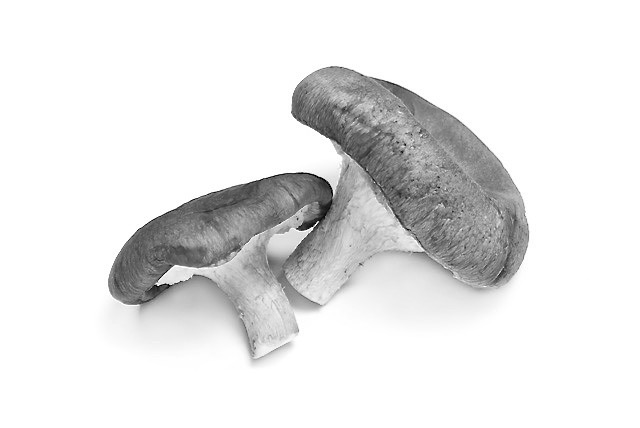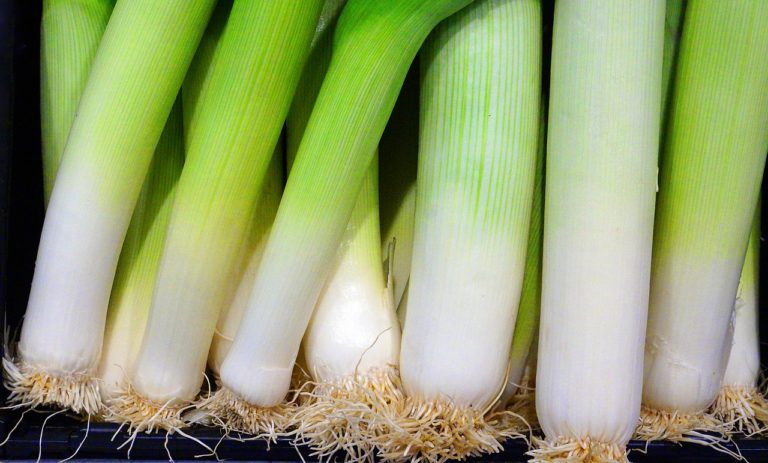You may not realize there’s a common denominator in most diseases we battle as a society today. That common denominator is inflammation. Inflammation is linked to just about every health condition out there.
According to a Harvard Medical School report, “Chronic inflammation plays a central role in some of the most challenging diseases of our time, including rheumatoid arthritis, cancer, heart disease, diabetes, asthma, and even Alzheimer’s.”
So how does inflammation play a role in some of these major diseases?
You might be surprised to find:
- Arthritis is inflammation of the joints.
- Heart disease is inflammation of the arteries.
- Alzheimer’s is inflammation of the brain.
The list continues, on and on.
Inflammation Is the Root of Most Diseases.
Did you know that inflammation is considered the root cause behind so many of these diseases?
Yet modern medicine focuses on treating symptoms, not addressing the root cause. And yes, inflammation is getting more buzz these days, but the problem remains because of the approach that modern medicine continues to use.
By being proactive you can prevent or delay the dreaded ABCs of aging – arthritis, brain drain, and cancer – while fueling your body to be energized and more resistant to viral infections. A wonderful added bonus of the anti-inflammatory lifestyle is fewer wrinkles and a better mood.
The secret to quelling inflammation lies in your next meal. But before we can understand how food plays a vital role, we should understand what inflammation actually is. If you would like to jump right into the full anti-inflammatory plan, grab my Whole Foods Quick Start Guide with Tracker to simplify the path to healthier snacks, meals, and deserts.
What Is Inflammation?
It’s important to understand that inflammation isn’t always the enemy. In fact, it can come to your rescue quite a bit.
Inflammation is an immune response. When you’re injured or ill, the lymphatic system jumps into action. It gathers all those white blood cells and charges headfirst to the area of concern with increased blood flow.
With this increased blood flow, you can experience swelling, heat, redness, and pain. Though you may not know when it’s happening inside your body – you’ve seen this firsthand when you experience a cut or scrape.
Each time you’re injured or eaten up by mosquitos at a campfire – you’re experiencing inflammation.
Without inflammation, these wounds would develop infections that could be deadly. Inflammation is not always the bad guy.
Acute vs. Chronic Inflammation
In most cases, inflammation is healthy and necessary. This is acute inflammation. Acute inflammation starts almost immediately and resolves within a few days at maximum.
When you fail to address the cause of the chronic inflammation, it then starts to attack the tissues in your body.
When inflammation persists – it is damaging, not healing. This is chronic inflammation. It can last for months or even years.
That’s when we’re met with autoimmune diseases and disorders like Diabetes, Cancer, Celiac, Irritable Bowel Disease (IBD), Hashimotos, and Multiple Sclerosis. Inflammatory effects are also linked to fibromyalgia, arthritis, and asthma.
Quite honestly, it’s alarming that there are too many to name them all.
Signs and Symptoms of Acute Inflammation:
- Redness
- Increased heat
- Swelling
- Pain
- Loss of function
Signs and Symptoms of Chronic Inflammation:
- Fatigue and insomnia
- Chest pains
- Fever
- Rash
- Joint pain
- Abdominal pain
- Mouth sores
- Depression, anxiety, and mood disorders
It’s quite obvious that there’s a very strong connection between inflammation and disease.
The good news?
There’s also a strong connection between diet and inflammation.
Instead of treating inflammation as a symptom with medicine, let’s start by going directly to the core issue and reducing inflammation in the first place. And this is where your diet comes in!
The Anti-inflammatory Diet: Eat Real, Whole Foods!
In 2014, a study was conducted on diet and IBD. All of the patients who participated and ate anti-inflammatory diets found relief from symptoms. They were even able to discontinue at least one medication they were on by the end of the study.
Your diet has a grand effect on how your body functions.
What you put in your shopping cart makes such an impact on your health.
You can load up your cart with sugary treats, processed foods, and refined grains – but you’re also increasing inflammation in your body. Doing this can cause serious long-term issues in your overall health.
I know it’s hard, but it truly is so simple. Every single thing you put in your body has the power to nourish – or the power to damage. It’s blunt. It’s scary. But it’s a simple truth.
So what foods should we stay away from?
Inflammation Causing Foods
Are you eating a diet that consists of inflammation-causing foods?
Keep reading to see how you can reduce chronic inflammation in your body through simple diet changes.
- Sugar
In a recent study, mice fed high sugar diets developed breast cancer that spread to their lungs due to the inflammatory response.
Foods high in sugar include:
- Candy
- Chocolate
- Soft drinks
- Juice
- Baked goods
- Cereal
Watch out for sneaky hidden sugars in the foods you eat.
Here are a few surprising sources of hidden sugar:
- Spaghetti sauce
- Ketchup
- BBQ sauce
- Gummy vitamins
- Sports drinks
- Granola
- Yogurt
- Flavored coffee
- Sweetened milk
- Harmful Fats
Vegetable and seed oils are used as the main ingredients in many processed foods. Be sure to stay away from partially hydrogenated oils.
These fats (including trans fat) are found in:
- Fast food
- Fried food
- Baked goods
- Frozen products
- Margarine
- Refined Carbohydrates
Refined carbs are severely lacking in nutrients and are high-glycemic. High-glycemic refers to how quickly a specific food can spike blood sugar levels. These types of foods trigger inflammation.
Examples of these carbs would be:
- Bread
- Bagels
- Rolls
- Crackers
- Pasta
- Cereal
- Pretzels
- Chips
Anti-inflammatory Foods
There’s such a powerful effect when replacing refined, processed, and inflammatory ingredients in your diet with real and nutritious whole foods. This is clean eating. A lifestyle, not a diet.
Here are some nutrient-dense real foods that are naturally anti-inflammatory.
- Vegetables
It’s no secret that vegetables have superpowers. They are undeniably healthy! Especially when you vary the color choices. Aim to eat at least 3 different colors every day.
Eat more veggies such as:
- Leafy greens (kale, spinach, broccoli rabe, arugula)
- Cruciferous vegetables (broccoli, cabbage, cauliflower)
- Onions
- Peas
- Squash
- Peppers
- Fruits
Fruits containing antioxidants are particularly strong as an anti-inflammatory.
Some of these fruits include:
- Apples
- Blueberries
- Watermelon
- Oranges
- Pineapple
- Water
Drink half your weight in ounces daily.
Consider using a stainless steel or glass water bottle to reduce chemicals leaching into your water. Plus – this helps you stay accountable with your daily goal of water intake. Win-win!
- Beans and Legumes
Did you know that the longest-lived people in the world eat a full cup of beans daily? Try these soaked, sprouted, or even canned! So many inexpensive choices to make it easy.
Delicious choices would include:
- Cannellini beans
- Black beans
- Chickpeas
- Black-eyed peas
- Lentils
- Healthy Fats
Healthy fats are everywhere and there’s a huge variety to choose from.
Some of these include:
- Avocado Oil
- Olive Oil
- Coconut Oil
- Flax Seeds
- Hemp seeds
- Chia seeds
- Herbs and Spices
Such an easy way to pack a punch into any meal you make.
Full of vitamins, minerals, and antioxidants – be sure to use these:
- Cinnamon
- Turmeric
- Curry powder
- Ginger
- Garlic
- Thyme
COOKING TIP: Saute ginger, garlic, and onions in coconut oil and add to any vegetables you desire. It’s a delicious way to get these nutrient-dense foods into your meals.
- Tea
Tea is an excellent choice when you’re getting tired of just water. There are many good choices, often labeled as a “detox”, “immunity”, or “respiratory” blend.
Be sure to drink 2 cups a day of your favorite herbal blend or:
- Green tea
- Chamomile tea
- Ginger tea
- Tulsi tea
- Protein
Think organic, hormone-free, pasture-raised, and grass-fed.
In addition to the beans mentioned above, you can get a healthy boost of protein by adding:
- Eggs – scrambled, fried, any way you fancy
- Meat – chicken, beef, wild-caught fish, lamb
- Nuts – cashews, almonds, walnuts
- Yogurt – whole milk, kefir, cashew
Tips on Transitioning to a Whole Foods Lifestyle
Feeling a bit overwhelmed? That’s understandable. There’s a lot to learn and implement on this journey to getting healthier.
Here are a few tips to encourage you on these changes to a whole foods lifestyle.
- Make Gradual Changes
I know it’s tempting to read all of this information and then swear off a large group of foods. But you and your family have a better chance at sticking to this healthier lifestyle if you make small changes gradually. It’s absolutely fine to go in baby steps and progress at your own pace. Remember – one step at a time, advancing at a pace that works for you. You’ve got this!
- Shop With a Grocery List
Not only will a grocery list save you money and time, but it also helps you stick to what you know you should be eating – not what just looks good as you roam the aisles. It’s also not a great idea to go shopping when you’re hungry. We’ve all been there. Plan your meals, make a list, and do your best to stay with it!
Do a quick scan of your items after placing them on the belt at the cashier. What do you see? Hopefully mostly fresh vegetables and other whole foods.
- Read the Labels
While the nutrition labels are important, first look at the ingredients list. If there’s an ingredient on there that you can’t pronounce, chances are you don’t want it in your body. Simple ingredients. Preferably organic! This is what you’re looking for.
Easy Anti-inflammatory Swaps
Changing the way you eat is easier than you think! Start with these easy swaps and you’ll be eating healthier in no time.
- Instead of fried potato chips – try baked kale chips, roasted chickpeas, or banana chips, and even snap peas!
- Swap the sugary cereals – enjoy steel-cut oatmeal, yogurt parfaits, and chia pudding.
- Replace cow’s milk – unsweetened vanilla almond milk or coconut milk are great alternatives.
- Skip the energy drinks – keep it simple with teas and coffee.
- Trade your white bread – go with whole grains or sprouted grains.
- Refined sugars – replace them with monk fruit sweetener or raw honey.
- Vegetable oil? Toss it in the trash – use avocado or coconut oil with high heat and olive oil with low heat and dressings.
- Up your omega-3’s – by choosing salmon or sardines over fish sticks, hamburgers, and hotdogs.
- Get into legumes – enjoy a zesty bowl of lentil soup in place of chicken nuggets
- Try dipping – replace cream cheese for hummus instead.
The Whole Foods lifestyle is simple once you get the hang of it. It’s eating in a way that involves limiting harmful foods like refined grains, added sugars, unhealthy fats, and processed foods.
It encourages nutrition through real, whole foods like fruits, vegetables, organic meats, herbs and spices, beans, and nuts.
Give these delicious alternatives a try and let me know in the comments below what you think!
Need a little help to start taking these steps? I’ve made it easy and simple for you with my Whole Foods Quick Start Guide and Tracker! Loaded with easy-to-digest nutrition tips and guidance on your Whole Foods journey.
Having a hard time finding healthy food that’s affordable? Ever heard of Thrive Market? Check out this blog post – Want Health Affordable Food? Join Thrive Market! – to learn more!



